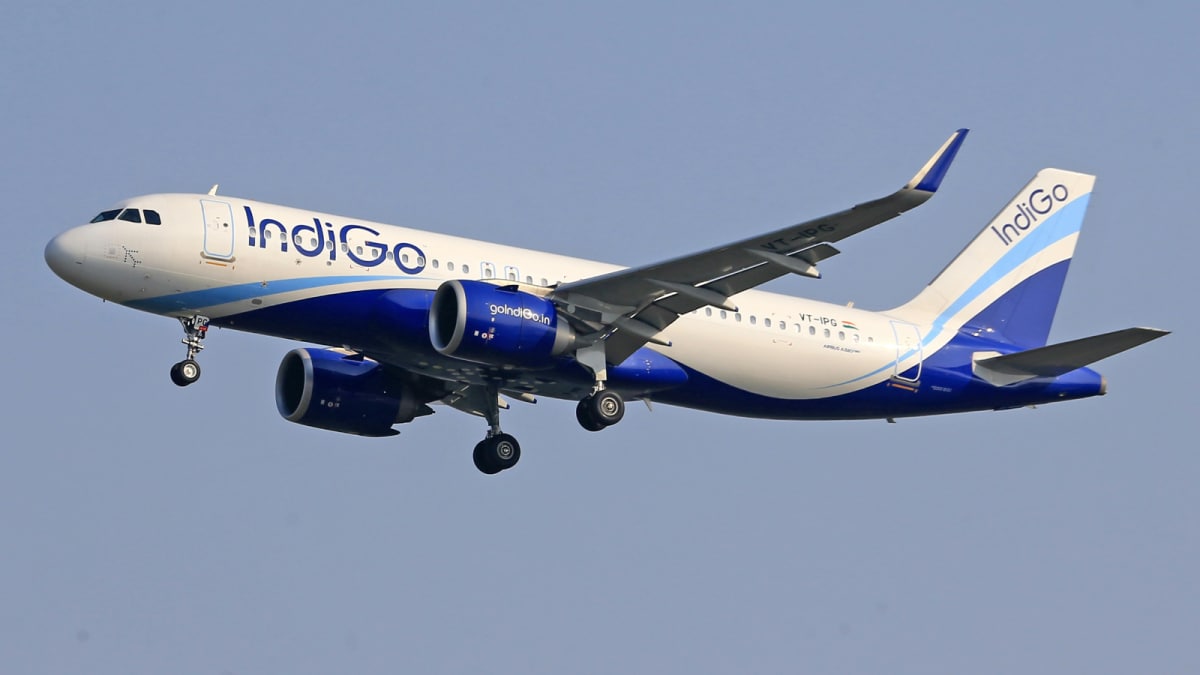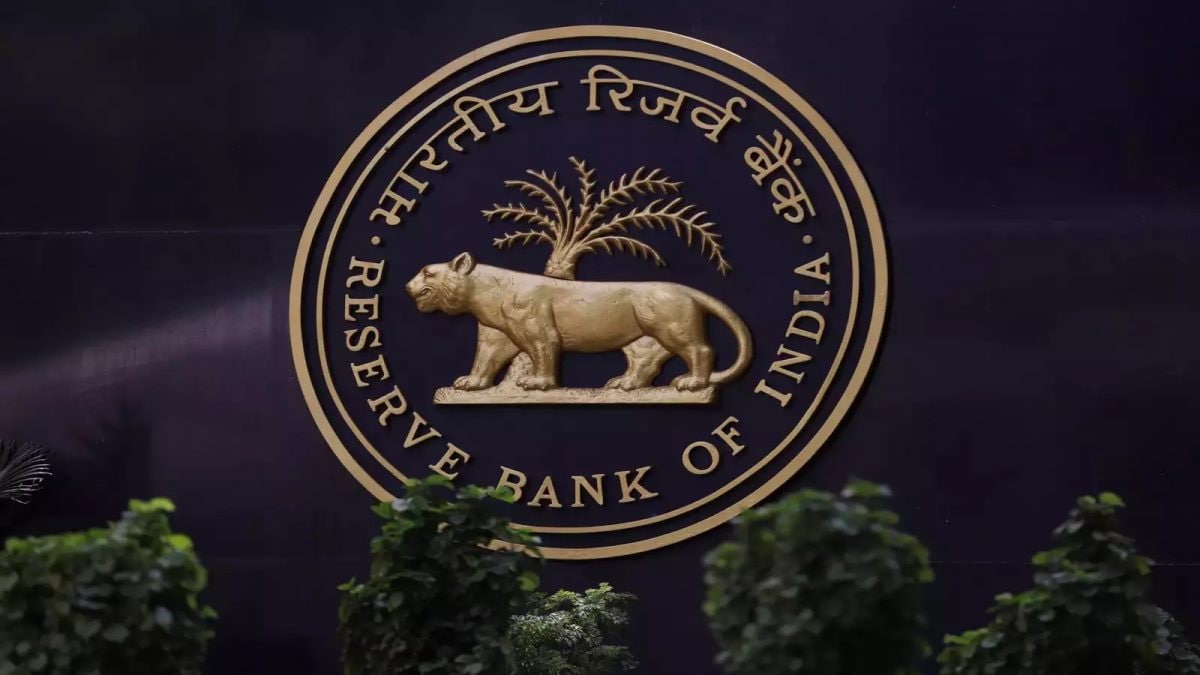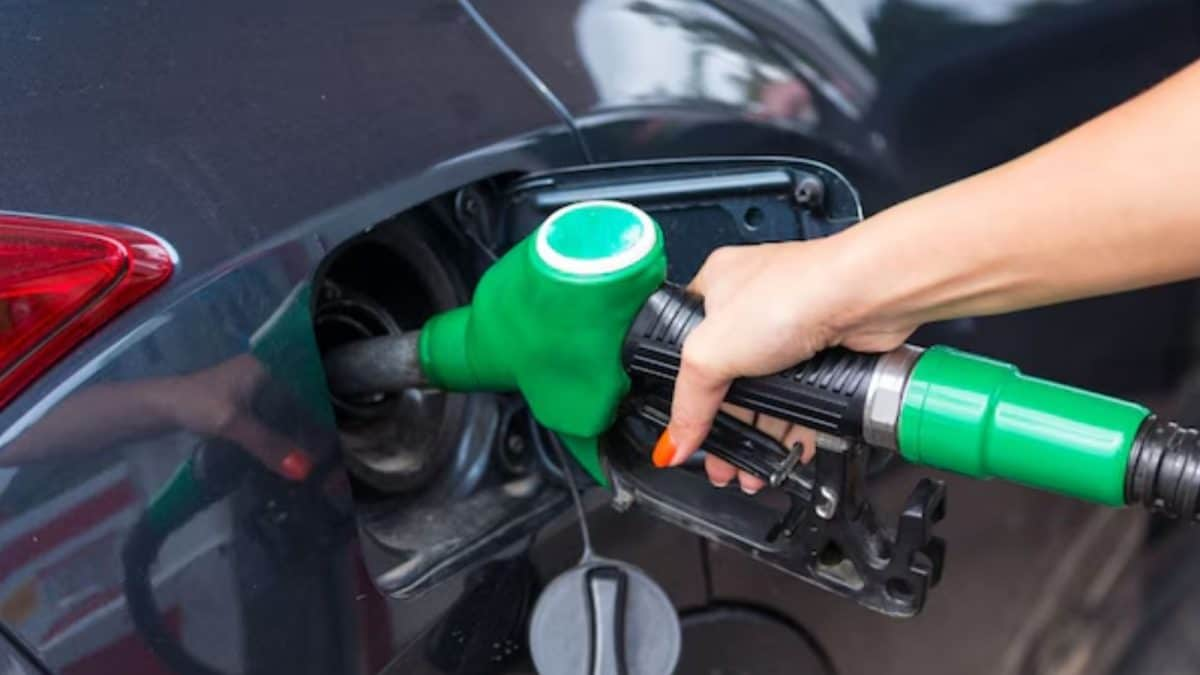Business
Cost and chaos continue to test resiliency of U.S. auto industry

A worker at Ford’s Kentucky Truck Plant on April 30, 2025.
Michael Wayland | CNBC
DETROIT — “A lot of cost and a lot of chaos.” That’s how Ford Motor CEO Jim Farley described the state of the automotive industry earlier this year amid geopolitical tensions, tariffs, inflation and other disruptions.
All those factors created massive uncertainty for the U.S. automotive industry that led to relatively bearish outlooks for the sector in 2025. Some of those concerns have come to fruition, but the industry has proven to be far more resilient than many had expected.
“Six months into the onset of tariffs, we’ve been positively surprised by the extent to which the industry has held in better than anticipated,” Barclays analyst Dan Levy said in an investor note last month that upgraded the U.S. auto/mobility sector to neutral from negative.
The neutral rating by Barclays speaks volumes about the state of the automotive industry right now, according to auto executives, insiders and analysts who say circumstances aren’t as bad as they once feared — but also that they still aren’t as positive or certain as they could be.
S&P Global last week released a new report explaining how tariff burdens have eased, but noting that demand headwinds persist amid slowing disposable income growth, consumer pessimism and fluid trade policies. The government shutdown also adds uncertainty to the economic outlook, the firm said.
Jim Farley, President and CEO of Ford Motor Company, speaks at a Ford Pro Accelerate event on Sept. 30, 2025 in Detroit, Michigan.
Bill Pugliano | Getty Images
The cautiousness followed S&P revising its U.S. light vehicle sales estimates upward by about 2%, to 16.1 million vehicles for 2025, and to 15.3 million, up 200,000, in 2026.
Part of what’s driven the unexpected optimism has been industry sales and production holding up much better than expected, in addition to broader macroeconomics such as consumer spending being relatively stable.
“The [economic] outlook is getting better, and part of it is realizing that tariffs didn’t end the world, and that applies to the auto market as well,” Cox Automotive’s chief economist, Jonathan Smoke, told CNBC. “I think we can navigate it, and I’m holding on to that optimistic outlook.”
Such optimism will be tested as major automakers such as General Motors, Ford and Tesla begin announcing third-quarter results this week.
Each of the American automakers is expected to report double-digit declines in adjusted earnings per share but remain profitable on an adjusted basis, according to analyst estimates compiled by LSEG.
“We expect Q3 earnings that [are] generally in line to slightly above expectations. Industry production did come in better than expected,” Wolfe Research analyst Emmanuel Rosner said in an Oct. 10 investor note. “But as always there are nuances to consider.”
Balancing act
The automotive industry is in a bit of a balancing act.
Tariffs have cost automakers billions of dollars this year, but deregulation of fuel economy penalties, as well as corporate gains under the Trump administration’s “One Big Beautiful Bill Act,” are expected to help offset those costs, Ford’s Farley and others have said.
Meanwhile, there are red flags of stress in auto lending for lower credit buyers, including the recent bankruptcy of subprime auto lender Tricolor — but sales and pricing of new vehicles through the third quarter remained far better than many had expected.
“There’s some positives for next year, but there could also be some really bad negatives if there’s a freak out on tariffs or the consumer finally breaks down or whatnot,” Morningstar analyst David Whiston told CNBC. “But no one’s calling for a complete crash.”
Fronts of the GMC Sierra Denali,Tesla Cybertruck and Ford F-150 Lightning EVs (left to right).
Michael Wayland / CNBC
Whiston — who covers GM, Ford and several auto retailers and suppliers — characterized his outlook as “cautiously optimistic,” saying the significant industry concerns are countered by other bullish circumstances.
UBS analyst Joseph Spak agreed, noting a lot of challenges for automakers such as tariffs and losses on electric vehicles “have already been incorporated into 2025/2026 estimates,” he said in an investor note last month.
In addition to the economic and political concerns, the automotive industry faces significant changes in all-electric vehicle adoption that caused GM last week to pre-report $1.6 billion in special charges during the quarter related to its pullback in EVs.
Adding to this year’s “chaos,” especially for Ford, is a fire last month at aluminum supplier Novelis that is impacting vehicle production. Wall Street analysts estimate the fire to cost Ford between $500 million and $1 billion in operating income.
“The industry is in a lot of flux. It faces an array of challenges,” Elaine Buckberg, a senior fellow at Harvard University and former GM chief economist, said regarding tariffs, EVs and other issues. “The level of volatility they’ve faced over the last seven years or so is unlike what came before.”
Suppliers
The broader supplier industry remains a major potential concern for automakers, as it did to begin the year.
The automotive supplier industry is made up of thousands of companies — ranging from multibillion-dollar publicly traded corporations to “mom-and-pop shops” making one or two parts — that industry experts say cannot support many, if any, additional cost increases.
“The market has been under pressure. It’s fragile,” said Mike Jackson, executive director of strategy and research for vehicle supplier association MEMA. “Those suppliers that are flexible and agile have been able to reposition themselves to be successful despite the changes, despite the shifts.”
Autolite spark plugs at an auto parts store in Provo, Utah, on Monday, Sept. 29, 2025. First Brands Group Holdings has filed for Chapter 11 bankruptcy, capping weeks of turmoil sparked by creditor concern over the auto-suppliers use of opaque off-balance sheet financing.
George Frey | Bloomberg | Getty Images
Not all have been able to compete successfully. The bankruptcy of U.S. auto parts maker First Brands Group in late September heightened concerns on Wall Street about the health of the private credit market. First Brands had a web of complex debt agreements with a slew of lenders and investment funds globally.
JPMorgan Chase CEO Jamie Dimon last week called the bankruptcies of First Brands and Tricolor Holdings “early signs” of excess in corporate lending, while some Wall Street analysts have written them off as idiosyncratic.
Executives have said automakers, also known as OEMs, or original equipment manufacturers, have so far done their best to assist suppliers when needed and have not passed on added tariff costs to such companies, but it’s unclear how long that may last.
“Suppliers clearly are working as hard as they can with their customers to try and mitigate the impact, understating it’s an important issue to work through,” Jackson said. “That said, there have been a number of different cost pressures that we’ve seen that go beyond the tariffs. … It varies by customer, by OEM.”
Shares of many larger publicly traded suppliers, such as Aptiv, BorgWarner, Dana and Adient, are up double digits so far this year. Even Canada-based Magna International, which at one point was expected to be one of the companies most impacted by tariffs, is up roughly 7%.
Those gains are despite the third quarter marking the 14th consecutive quarter of building pessimism by North American auto supplier executives, according to MEMA’s most recent “Vehicle Supplier Barometer” released earlier this month.
Adding to supplier concerns are continuing issues with tariffs between the U.S. with Mexico and Canada as well as the Trump administration’s ongoing trade war with China, where many rare earth materials, some of which are used in vehicles, are processed and sourced.
K-shaped concerns
There are also continuing concerns that the automotive industry is an example of a “K-shaped” economy in the U.S., where the wealthy keep seeing gains while those who have lower incomes struggle.
Economists have warned the U.S. economy is increasingly K-shaped following the coronavirus pandemic, with consumers experiencing different realities depending on their income level.
Used vehicle retailer CarMax was the first major auto-related company to sound the alarm on the consumer late last month.
“The consumer has been distressed for a little while. I think there’s some angst,” CarMax CEO Bill Nash told analysts earlier this month, with an auto lending executive for the used car retailer warning the “cracks” are “an industry issue.”

But that “issue” appears to only be for lower-income consumers or those with subprime credit, many of whom are not new car buyers.
Wealthier Americans have been assisted by rising house values, lucrative stock market returns and favorable credit, while lower- and middle-income buyers have faced tighter budgets and have been hit hard by rising inflation.
Fitch Ratings reports 6.43% of subprime auto loans in August were at least 60 days past due, in line with a record high of 6.45% that was hit in January. Delinquency rates for borrowers with higher scores have remained relatively stable.
“Clearly there is concern about the consumer, because if you’re not in the upper part of the ‘K’ then yes, there is stress,” Cox Automotive’s Smoke said. “But it tends to be a demographic story about median and below income households.”
About two-thirds of new vehicle purchases are made by people whose household income is above the median, according to Buckberg. The U.S. household median income last year was $83,730, according to U.S. Census Bureau estimates
That percentage could continue to grow and impact sales if tariff costs begin getting passed on to new car buyers or the whiplashing regulatory chaos barrels more into the automotive industry.
“That’s really the big question for 2026. I think everyone in the industry is assuming consumers are going to start to get tariffs passed down to them for autos. They haven’t really yet,” Whiston said. “How does the consumer react to that? Will they just take it in stride, pay more and keep going? Or will it just cause a massive freak out? No one knows the answer to that yet.”
Business
IndiGo Faces Massive Flight Cancellations: Can Travel Insurance Save Stranded Flyers?

Last Updated:
IndiGo faces massive flight cancellations despite DGCA rollback, affecting thousands. Experts like advise on travel insurance claims and proper documentation.
ndiGo Disruption Intensifies: What Travel Insurance Covers During Flight Chaos
There seems to be no end to the mayhem of IndiGo’s operational meltdown as hundreds of flights have been cancelled on Saturday. The chaos has continued despite the Directorate General of Civil Aviation (DGCA) rolling back the Flight Duty Time Limitations orders, which were the lead cause to disrupt the capability of carriers to maintain regular operation.
Thousands of passengers, from students to senior citizens to professionals, have been affected in the past few days during the flight cancellations, disrupting their plans and schedules. Along with that, they have to face monetary losses too.
Travel insurance is one such option that travelers can use while facing this kind of situation. Not many of people in India are aware of how a travel insurance works and whether all plans cover flight cancellation costs.
Meet Kapadia, Head of Travel Insurance at Policybazaar.com said that travel Insurance offers fixed pay outs if the traveller is stranded for a specified number of hours (6–12 hours).
“They also reimburse the cost if the flight is cancelled and traveller has to book a new flight, or arrange hotel stay, cover meals, essentials, and other emergency purchase,” Kapadia added.
Customers, however, should know that a very low-priced/ basic product of travel insurance may not pay for non-medical losses from an airline operational cancellation unless that benefit is purchased, according to Chetan Vasudeva, Senior Vice President – Business Development at Elephant.in, Alliance Insurance Brokers.
“No – basic plans may not fully cover losses from airline operational problems unless the policy explicitly includes or has an option for trip cancellation / carrier cancellation, trip interruption, missed-connection or trip-delay benefits,” Vasudeva added.
He further told that many standard travel policies include only basic medical, baggage and emergency assistance by default. “If you want protection specifically against airline operational issues, check for carrier cancellation/trip cancellation/missed-connection or buy a cancel-for-any-reason add-on cover.”
Beyond the financial safety net , the insurer also provides 24×7 assistance and emergency support to help passengers manage disruption with less stress in unfamiliar locations.
What Should Customers Need To Do To Get Claims?
The first 24 hours after a flight cancellation are crucial for building a strong claim file.
The policyholder should immediately need to obtain written proof from the airline such as an email, SMS, or a formal flight disruption certificate, that clearly state the due cause and timing of the cancellation, explained Vasudeva. “At the same time, this is when policyholder should inform their insurance provider’s helpline immediately after the disruption; quick intimation is often listed as a mandatory requirement in most policies,” he added.
During this period, every incidental expense such as food, hotel stays, transport, or rebooking, should be supported with itemized receipts and payment proofs. If the airline offers alternative arrangements like meal vouchers or free accommodation, passengers need to preserve those records as well, because insurers cross-verify what has already been compensated.
Careful documentation in the first 24 hours substantially reduces the chances of queries, delays, or rejection during the processing of claims, Vasudeva stated.
December 06, 2025, 13:56 IST
Read More
Business
After 25 Bps Cut, India At 5.25%: How Policy Rates Compare Across BRICS, US And Other Economies

Last Updated:
At 5.25%, India’s policy rate is higher than the US, UK and Eurozone but far below Brazil and Russia, which still run double-digit rates to fight inflation pressures.
RBI cuts repo rate by 25 bps to 5.25 per cent
India’s Central bank has shifted gears to support the economic momentum and ease lending with a rate cut of 25 basis points in the latest Monetary Policy Committee (MPC) meeting between December 3 to 5. The latest lending benchmark – repo rate – stood at 5.25 per cent after Friday’s 25 bps cut from 5.50 per cent.
The Reserve Bank of India (RBI) governor, Sanjay Malhotra, in his speech on Friday, termed the current economic situation as ‘rare goldilocks period’, stating that inflation is at a benign 2.2 per cent and growth at 8.0 per cent in H1:2025-26.
The standing deposit facility (SDF) rate under the liquidity adjustment facility (LAF) now adjusted to 5.00 per cent and the marginal standing facility (MSF) rate and the Bank Rate to 5.50 per cent. The MPC also decided to continue with the neutral stance.
The repo rate is the interest rate at which banks borrow money from the RBI. When banks face a shortage of cash, they borrow from the RBI by pledging government bonds. The interest the RBI charges on this borrowing is known as the repo rate. If the RBI raises the repo rate, borrowing becomes costlier for banks. If it lowers the rate, banks can access funds more cheaply.
The policy rate is a critical monetary tool utilised by the banks to control money flow into the economy. The Central banks of different countries seek to strike a balance to keep the economic growth momentum and stop inflation from getting out of control.
Comparison of Different Policy Rates As Of Now In Major Economies:
| Country | Interest Rate (Policy Rate) |
| United States | 4.00 % |
| United Kingdom | 4.00 % |
| Eurozone (ECB) | 2.15 % |
| India (RBI) | 5.25 % |
| Japan (BoJ) | 0.50 % |
| Australia (RBA) | 3.60 % |
| Canada (BoC) | 2.25 % |
| China (PBoC) | 3.00 % |
| Brazil (BCB) | 15.00 % |
| Russia (CBR) | 16.50 % |
India’s policy rate stood in align with the developed economies such as USA and UK, while a way too below in comparison to BRICS countries. For instance, Brazil and Russia’s policy rates are in the double digit – 15% and 16.50% respectively, due to run away inflation.
December 06, 2025, 09:34 IST
Read More
Business
Petrol, Diesel Fresh Prices Announced: Check Rates In Your City On December 6

Last Updated:
On December 6, 2025, OMCs updated petrol and diesel prices across cities like New Delhi, Mumbai, and Chennai, reflecting global crude oil trends, taxes, and currency rates.

Petrol, Diesel Prices On December 6
Petrol and Diesel Prices on December 6, 2025: OMCs update petrol and diesel prices daily at 6 AM, aligning them with fluctuations in global crude oil prices and currency exchange rates. This daily revision promotes transparency and ensures consumers have access to the most up-to-date and accurate fuel prices.
Petrol Diesel Price Today In India
Check city-wise petrol and diesel prices on December 6:
| City | Petrol (₹/L) | Diesel (₹/L) |
|---|---|---|
| New Delhi | 94.72 | 87.62 |
| Mumbai | 104.21 | 92.15 |
| Kolkata | 103.94 | 90.76 |
| Chennai | 100.75 | 92.34 |
| Ahmedabad | 94.49 | 90.17 |
| Bengaluru | 102.92 | 89.02 |
| Hyderabad | 107.46 | 95.70 |
| Jaipur | 104.72 | 90.21 |
| Lucknow | 94.69 | 87.80 |
| Pune | 104.04 | 90.57 |
| Chandigarh | 94.30 | 82.45 |
| Indore | 106.48 | 91.88 |
| Patna | 105.58 | 93.80 |
| Surat | 95.00 | 89.00 |
| Nashik | 95.50 | 89.50 |
Key Factors Behind Petrol and Diesel Rates
Petrol and diesel prices in India have remained unchanged since May 2022, following tax reductions by the central and several state governments.
Oil Marketing Companies (OMCs) update fuel prices daily at 6 am, adjusting for fluctuations in global crude oil markets. While these rates are technically market-linked, they are also influenced by regulatory measures such as excise duties, base pricing frameworks, and informal price caps.
Key Factors Influencing Fuel Prices in India
-
Crude Oil Prices: Global crude oil prices are a primary driver of fuel prices, as crude is the main input in petrol and diesel production.
-
Exchange Rate: Since India relies heavily on crude oil imports, the value of the Indian rupee against the US dollar significantly affects fuel costs. A weaker rupee typically translates to higher prices.
-
Taxes: Central and state-level taxes constitute a major portion of retail fuel prices. Tax rates vary across states, leading to regional price differences.
-
Refining Costs: The cost of processing crude oil into usable fuel impacts retail prices. These costs can fluctuate depending on crude quality and refinery efficiency.
-
Demand-Supply Dynamics: Market demand also influences fuel pricing. Higher demand can push prices up as supply adjusts to consumption trends.
How to Check Petrol and Diesel Prices via SMS
You can easily check the latest petrol and diesel prices in your city through SMS. For Indian Oil customers, text the city code followed by “RSP” to 9224992249. BPCL customers can send “RSP” to 9223112222, and HPCL customers can text “HP Price” to 9222201122 to receive the current fuel prices.
December 06, 2025, 07:47 IST
Read More
-

 Sports5 days ago
Sports5 days agoIndia Triumphs Over South Africa in First ODI Thanks to Kohli’s Heroics – SUCH TV
-

 Tech6 days ago
Tech6 days agoGet Your Steps In From Your Home Office With This Walking Pad—On Sale This Week
-

 Fashion5 days ago
Fashion5 days agoResults are in: US Black Friday store visits down, e-visits up, apparel shines
-

 Entertainment5 days ago
Entertainment5 days agoSadie Sink talks about the future of Max in ‘Stranger Things’
-

 Politics5 days ago
Politics5 days agoElon Musk reveals partner’s half-Indian roots, son’s middle name ‘Sekhar’
-

 Tech5 days ago
Tech5 days agoPrague’s City Center Sparkles, Buzzes, and Burns at the Signal Festival
-

 Sports5 days ago
Sports5 days agoBroncos secure thrilling OT victory over Commanders behind clutch performances
-

 Entertainment5 days ago
Entertainment5 days agoNatalia Dyer explains Nancy Wheeler’s key blunder in Stranger Things 5











